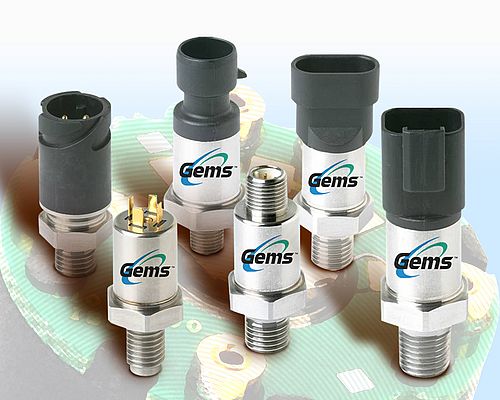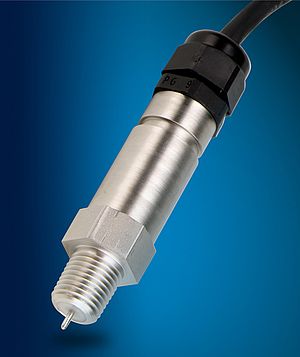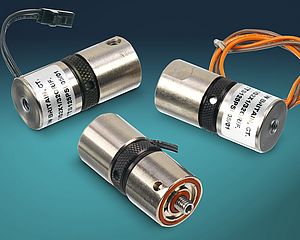To provide components that function in aggressive process conditions, the designers of pressure transducers have turned to the latest Chemical Vapour Deposition and electronic technology, says Mike Powers, Product Marketing Director for Gems Sensors and Controls.
In essence, a pressure transducer is a simple device; it is a component designed to convert pressure, typically that of gases or liquids, into an electrical output signal. In practice however, the of those electrical output signals can vary dramatically depending upon the construction and specification of the transducer. Today, it is possible to achieve responses to changes in pressure of 1msec or less, with virtually zero drift in accuracy over millions of cycles and in the most aggressive process conditions. However, the impressive statistics offered by transducers have only been made possible by the latest chemical vapour deposition and electronic technology, which has not only enabled these devices to offer such impressive levels of accuracy and reliability but also enabled manufacturers to offer them at prices that an increasing number of engineering operations are able to afford.
Inside the latest pressure transducers you will typically find an extremely sensitive pressure sensing element combined with a sophisticated electronics package. Looking first at the sensing element, we can see how the outstanding levels of performance offered by these components has been made possible as a result of some highly innovative and carefully controlled methods of construction; in particular the advanced strain gauge technologies of sputtered thin film and chemical vapour deposition.
Strain gauge sensors, which detect movement in a pressure sensitive diaphragm and convert the information into electrical signals, can be effectively manufactured using chemical vapour deposition (CVD) technology. The CVD process is capable of producing compact devices that provide high levels of accuracy with excellent hysteresis characteristics. CVD sensors can also be mass produced in volume and at low unit cost, since they are produced on wafers in large batches, using polysilicon deposited on a stainless steel substrate, with the strain gauge patterns being chemically milled. The wafer is then divided to produce individual sensor beams, which are laser-welded to a stainless steel summing diaphragm and pressure port, before being connected to internal electronics for signal conditioning and amplification.
Gems Sensors and Controls manufactures a range of transducers using this method. Our 3300 Series pressure transducers possess a wide range of outputs, electrical connections and pressure ports, with pressure ranges from 1 to 16 bar, or 15 to 200 psi, and are capable of operating over a temperature range of -40°C to +125°C. They also offer a long operating life with excellent resistance to pressure shocks and mechanical vibration, while the high temperature vacuum brazing of the stainless steel components during sensor production offers a strong and corrosion resistant structure with low hysteresis and creep. The versatility of the 3300 series opens up options for a host of new applications across a number of different industries from general industry to transportation and medical markets.
The use of sputtered thin film, a molecular layer of material atomically fused to the beam or diaphragm, has also been integral to the success of the latest fluid pressure transducers. Sputtering is a process whereby a solid target material is bombarded by energised particles, causing it to release atoms. These atoms are then deposited onto the sensing structure forming the thin film, resulting in a sensitive, robust sensor that is suitable for direct contact with almost all liquids, oils and gases.
The effectiveness of these manufacturing processes is complemented by the second key element in the production of sensors - the electronics package. The integral electronic signal conditioning that has been supplied with pressure transducers over recent years often incorporates advanced ASIC (application specific integrated circuits) technology. ASIC technology has been a key attribute of pressure transducers for two reasons. Firstly, it has allowed the performance and functionality of each transducer to be tuned to meet the specific requirements of each customer, and secondly it has brought about significant reductions in manufacturing costs. Combined with improvements in volume manufacturing techniques, the introduction of ASIC has, in many instances, enabled sensors to be sold at a price that is 90% cheaper than the cost of previous sensors that performed the same task.
Designers and engineers are continuing to refine and improve the efficiency of sensor components for use in even the most aggressive process conditions. Extremes of temperature, mechanical shock and vibration constantly challenge pressure sensors but, thanks to the latest chemical and electronic technology, these challenges continue to be overcome.


































